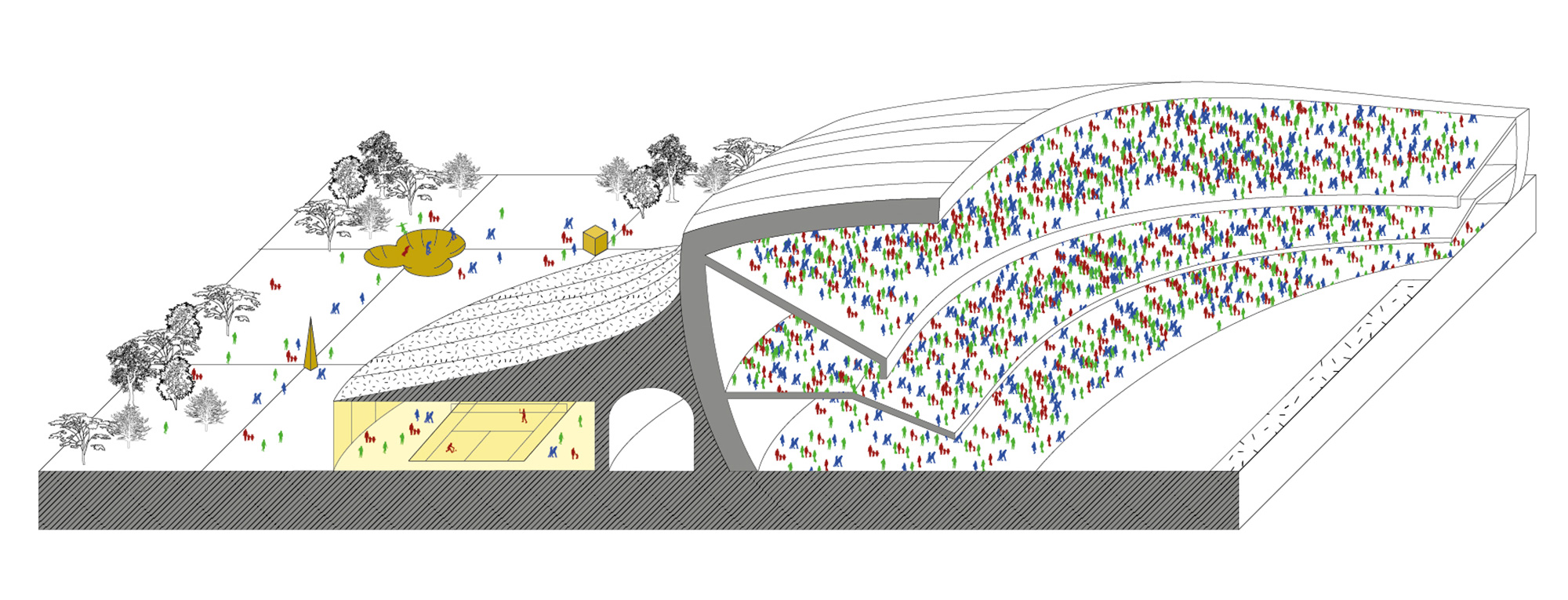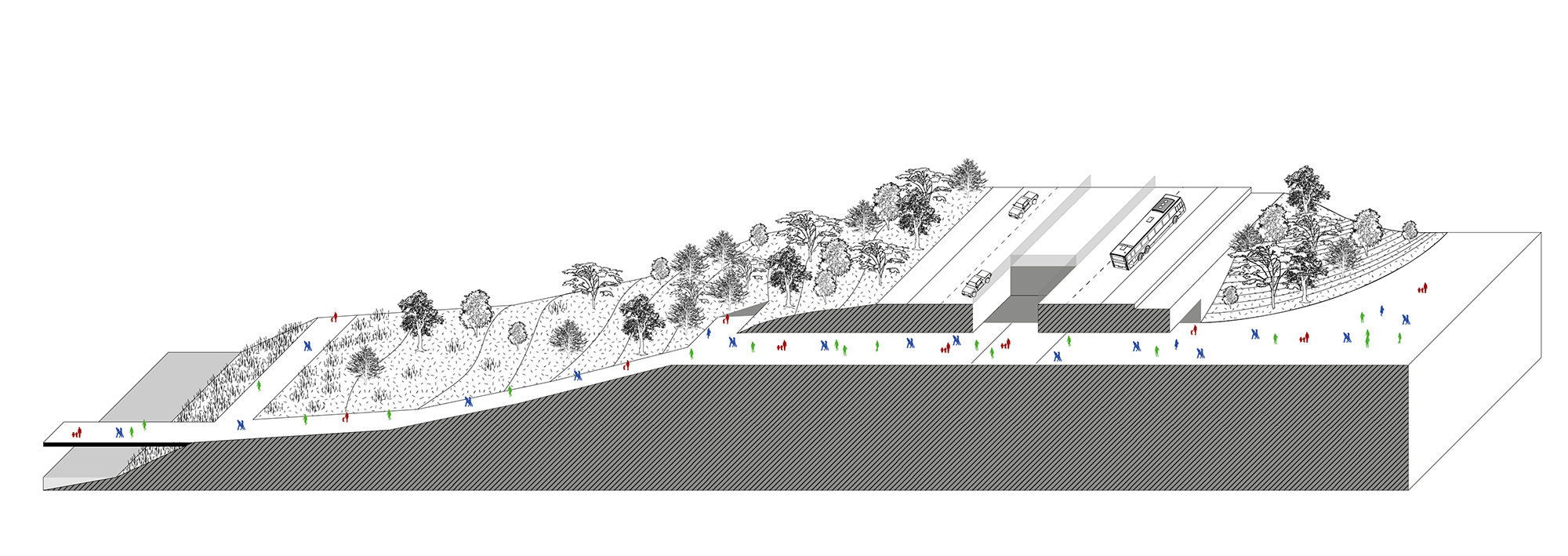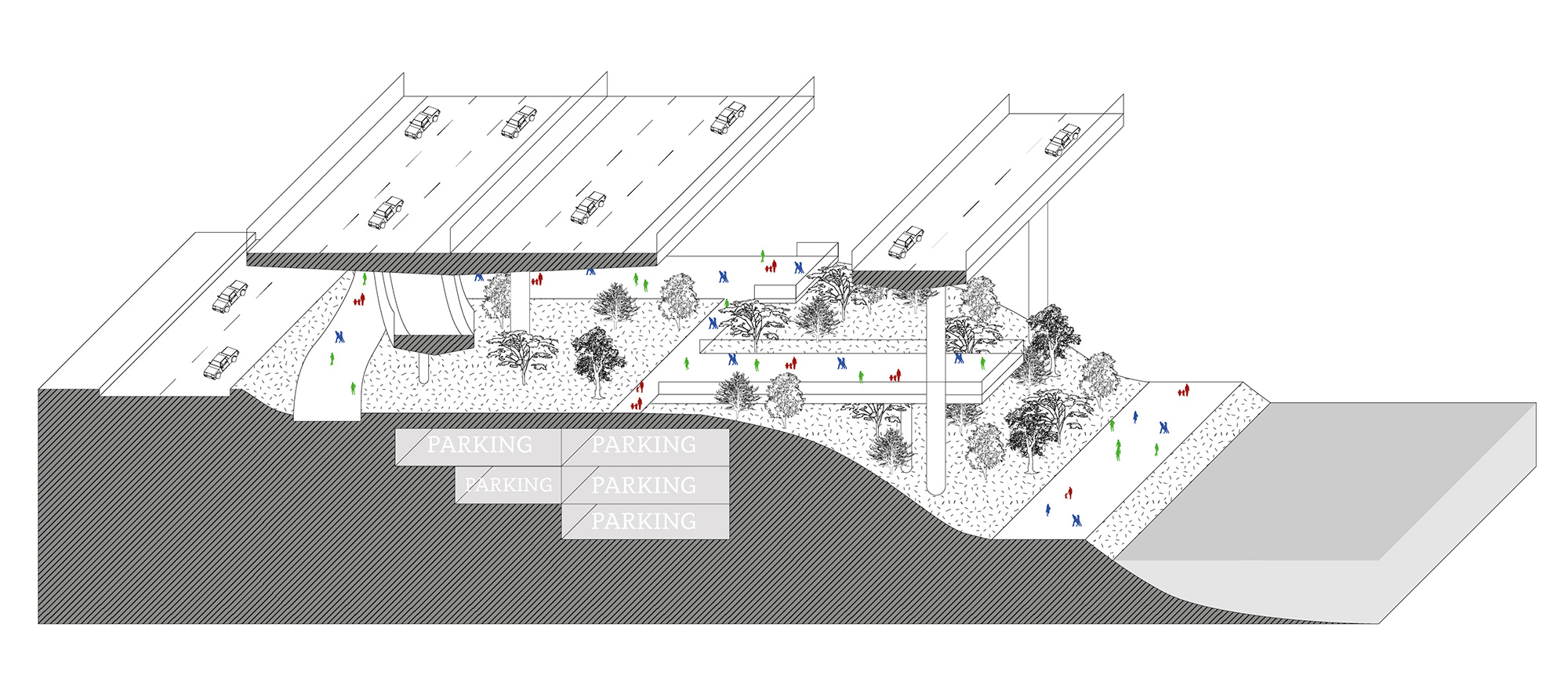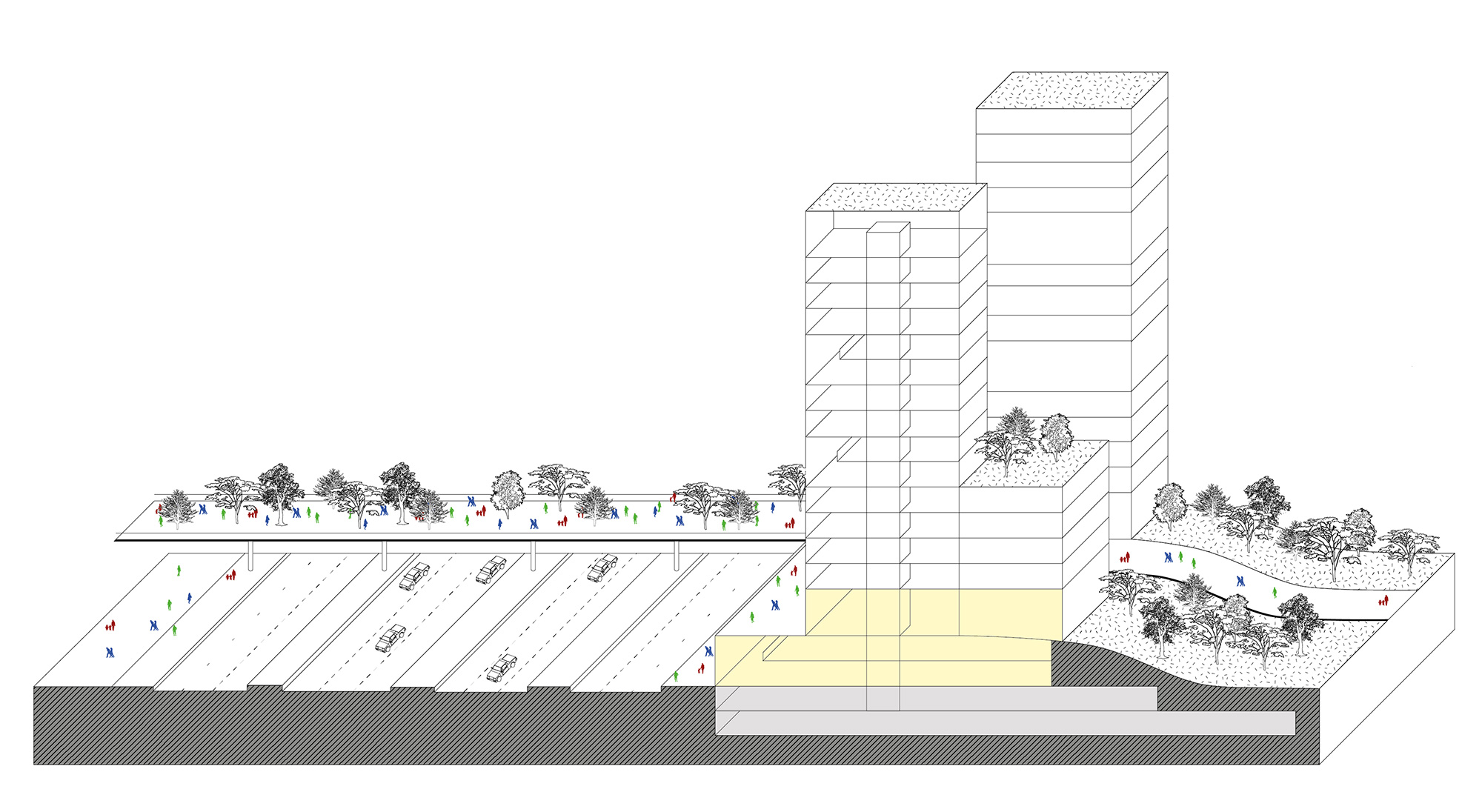Seeding memory
Seoul, South Korea
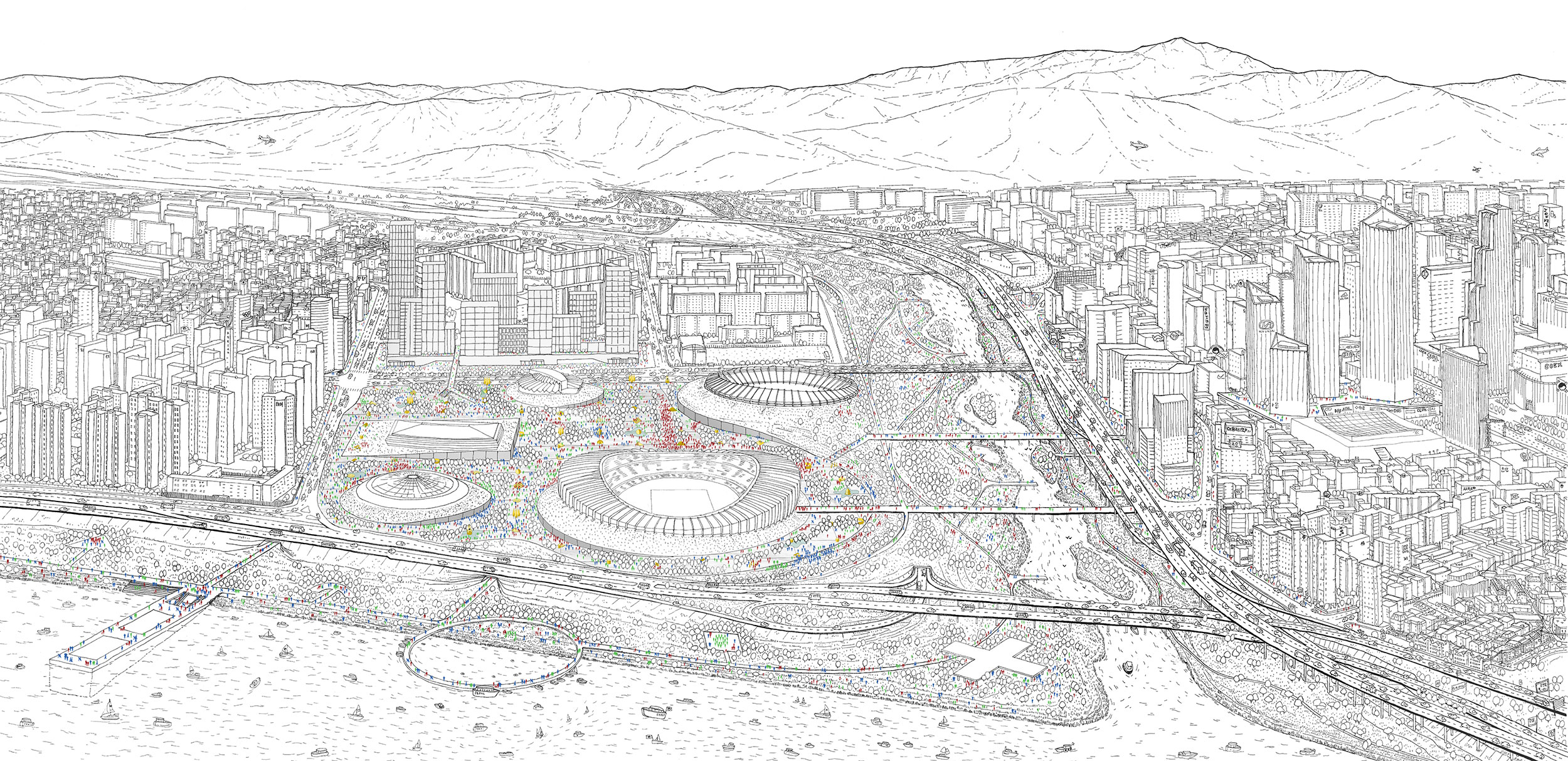
The site’s legacy for Korea, Seoul, and the world is immense. It represents for many the emergence of Korea on the global platform. This history must be respected, but not treated as a static relic. The power of the site must be leveraged to bring forth a rich layer of surfaces and subsurfaces fertile for future legacies. Urban development has been assumed to be delivered from the top and subsequently occupied and interpreted by society. Both top down and bottom up have their power. This proposal uses the strengths of both to influence and co-evolve with each other to the benefit of both. A ‘citizen-centered space’ IS an International attraction. Allowing the many existing forces flowing by the site to cohabitate within it will allow the emergence of a competitive ‘internationally exchange district’. Urban ecologies, like natural ones, have life cycles. The strategy is to enhance already assumed large infrastructural gestures to allow space for experimentation, expansion, and even death of spatial programs. The space must not be ‘redesigned’ to be once again static, awaiting its next redesign in 30 years. It must set forth a series of systems to allow for the site to grow and adapt with its city, its country, its people and the global society.

The XS generates public life, XL are containers that attract new users.
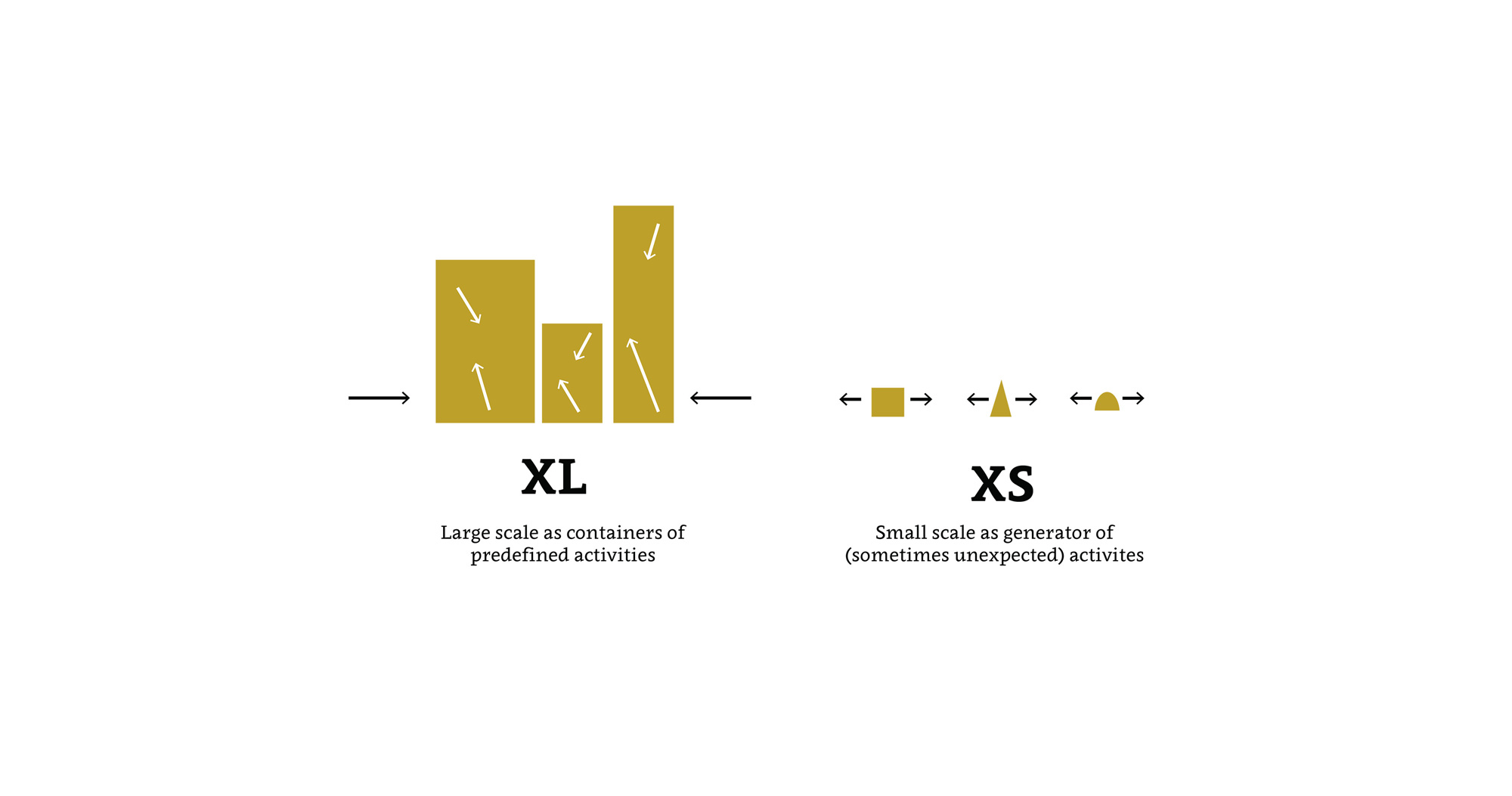
XS SEEDS. Not pavilions, but activators that can grow, die, or merge.
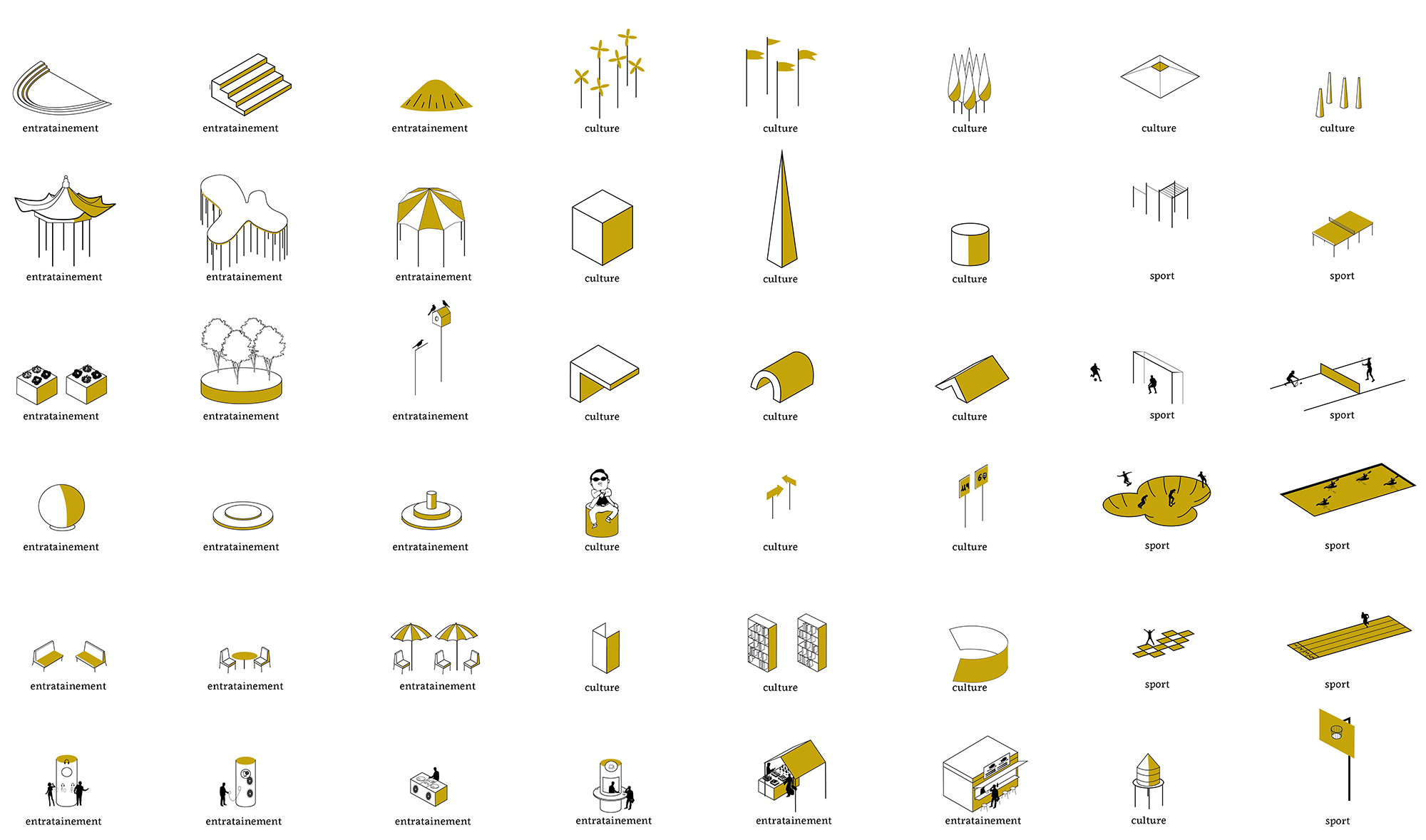
Long Lines – various influences on the site. A new transport network of Bus Rapid Transit and Ferry network is formed linking the moving of people to the Han River. The Tancheon River pulls the nature from the distant hills along the site. The Teheran-ro extends the Gangnam business main street into the site. The surrounding residential communities and their inhabitants permeate into the site.
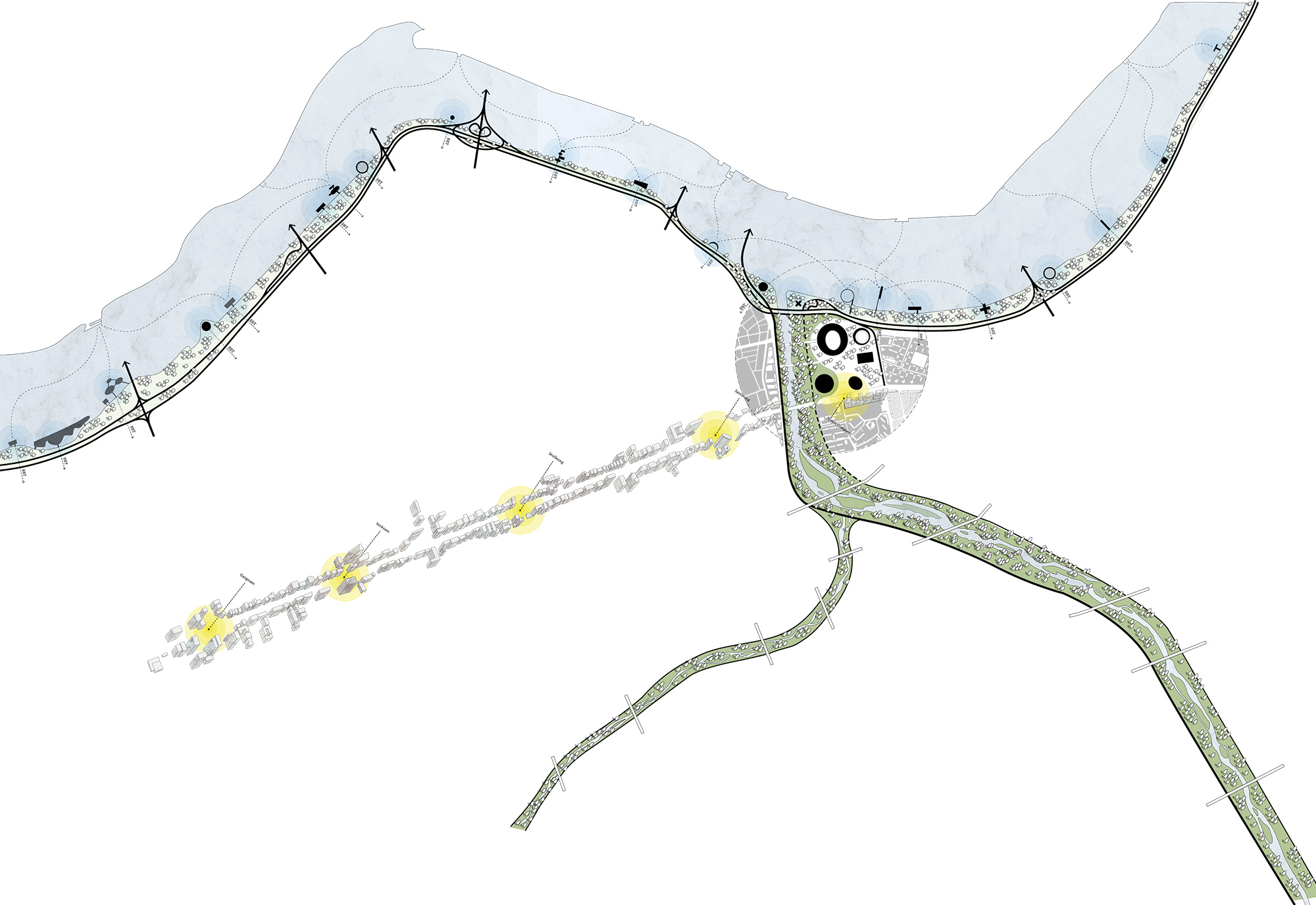
XL: NATURAL and ARTIFICIAL INFRASTRUCTURES. The extra-large elements such stadiums, road infrastructures and river are enhanced sustainy exploited accordingly to the climatic challenges of the site
